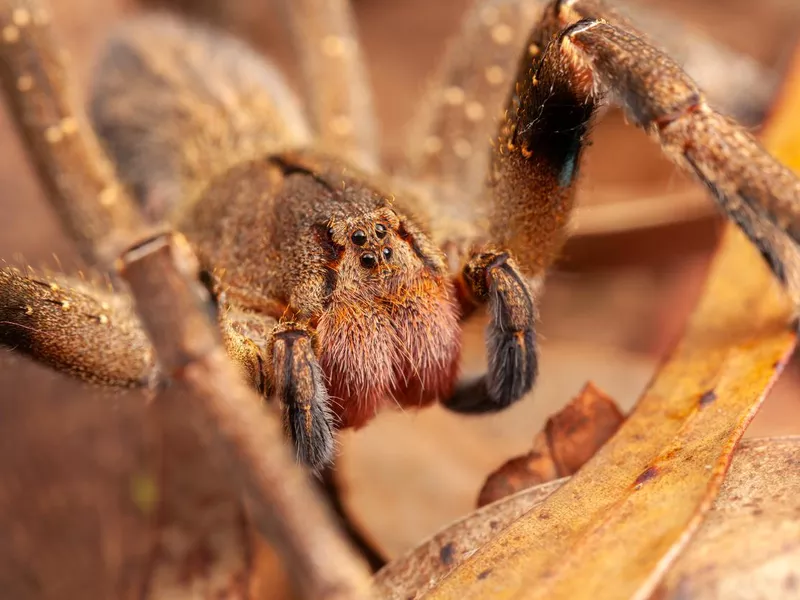There are more than 43,000 species of spiders globally, but less than 30 have been responsible for human deaths. Much of it depends on the degree of venom in the bite and the size of the victim who has been bitten. Certain spider bites can take down a small animal, but very few are lethal to humans.
In most cases, a poisonous spider bite on humans results in pain, swelling, vomiting, dizziness, headaches, temporary paralysis and, in more severe cases, skin necrosis (the death of skin tissue). Fortunately, with the introduction of antivenom medication, there have been fewer spider-bite fatalities in the last 40 to 50 years.
Appearances can be misleading when it comes to spiders. A large, gnarly-looking spider may be completely harmless, yet some of the smallest arachnids have the deadliest bite. Here are 25 scary spiders that also happen to be the most dangerous in the world.
What Makes This Scary Spider So Dangerous
One of the larger recluse species, the Chilean recluse spider is mainly found in the forest areas of Chile, Peru, Argentina, Ecuador, Uruguay, and the southern and eastern parts of Brazil. This long-legged, nocturnal spider has six eyes to help it see better in the dark when hunting for prey. But their unique metabolism enables them to go up to six months without food or water.
Depending on the potency of their bite, the effects from the Chilean recluse’s injection may not appear until several hours later when blisters appear on the skin. Although most bites result in temporary skin irritation, some victims have experienced severe skin necrosis after being bit with the potent venom.
What Makes This Scary Spider So Dangerous

TacioPhilip / Getty Images
The Guinness Book of World Records considers the Brazilian wandering spider the most venomous in the world. They are brown, hairy spiders similar to the American Wolf spider in appearance but larger and far more toxic. Hundreds of people are bitten yearly by this dangerous arachnid, but a powerful antivenom has prevented death in most cases.
They are not necessarily aggressive but, if threatened, will rise up on their first two legs in a posture that serves as a warning that they are ready to attack. People bitten by the Brazilian wandering spider have reported symptoms such as nausea, abdominal cramping, high or low blood pressure, blurred vision, hypothermia, fast or slow heartbeat, convulsions, sweating and shock. Therefore, it is essential to seek immediate medical attention if bitten by one of these deadly arachnids.